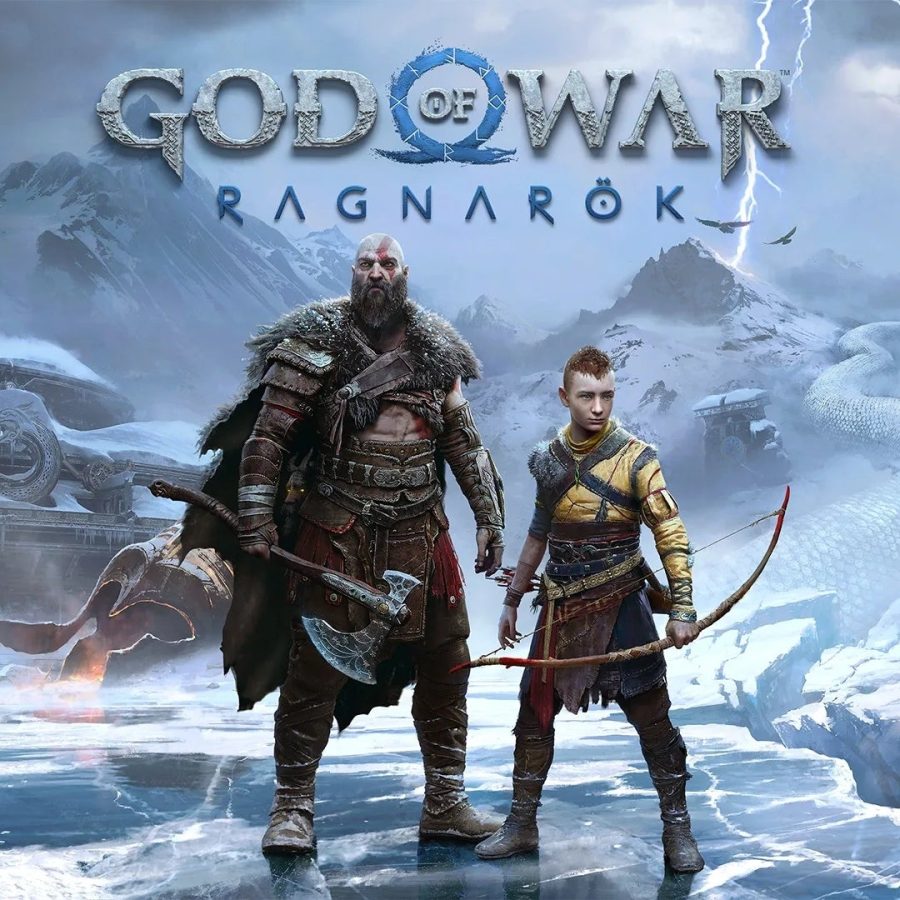‘God of War: Ragnarök’ Ends a Legendary Journey
Video Game Review
January 6, 2023
Back in 2018, Santa Monica Studios released its beloved and incredible game, “God of War.” Almost immediately after this release, the company began work on the sequel because of how well the game was reviewed, and as it is, “God of War: Ragnarök” is an amazing end to the magical journey its predecessor started.
Much like its predecessor, “Ragnarök” is a masterpiece of a game. It uses the same impressive mechanic by having the whole game take place in a single camera shot. In other words, the camera never stops going. There are no fade-to-blacks or fade-to-whites for cutscenes. While single-camera shot segments are common in levels of other games, only “Ragnarök” and the previous entry have had the entire game go through the single shot. Even during travel when you walk through a white void there isn’t a fade; instead, the game essentially ramps up the brightness for a few moments until it loads the area you are going to.
This set of games still takes place in the same timeline and everything that happened in the originals still happened, but thanks to the actions of Kratos, the greek god of war and destroyer of Olympus, the games needed a place to move on to, so, now it takes place in ancient Scandinavia, Midgard (aka earth). The games follow Norse Mythology, giving Kratos and his son Atreus a new pantheon to struggle against.
“Ragnarök” takes place 3 years after the events of the last game, which is the length of Fimbulwinter, the winter to last 3 summers, and leads into Ragnarok, the end of all realms. Fimbulwinter began because of the death of Baldur, son of Freyja and Odin. With never-ending winter, Midgard has frozen solid and is covered in ice and snow. All the realms begin to be affected in different ways due to the end of days.
In the last 3 years, Kratos and Atreus have been getting prepared for, as Kratos says, “A fight they are not prepared for,” meaning the battle against Thor, Odin, and the forces of Asgard. The two would want vengeance, as Baldur was also Thor’s brother, plus Kratos and Atreus killed Magni and Modi, the sons of Thor. However, Odin offers a different deal: if Kratos doesn’t hunt down the Aesir, and Atreus stops looking for Tyr, the god of war in Norse mythology, they’ll be left alone and kept safe. To keep it short, the story was just as incredible as the last game, with plenty of lore, and we got to experience character growth from multiple people. Not to mention, the boss fights were wonderfully entertaining.
This game also adds a couple of new skill techniques for weapons, which are called weapon awakenings. When either pressing or holding the triangle button, your weapons will activate a special ability, so your next attack will be more critical. The skill tree system is almost the same as “God Of War” (2018), although something to help this time is instead of one big mass of XP (experience points) used for both Kratos and Atreus, they each get personal XP so you can be a bit more liberal with your spending, whether it be for going through the skill tree, upgrading items, or upgrading the spartan rage ability. Fair warning to any of the squeamish, the game is much more violent and gory than before, but if that’s your thing, you’ll have plenty to enjoy.
“Ragnarök” makes way for a massive new array of characters to be met and fun interactions between everyone for a more intimate and enjoyable experience, primarily when Mimir, who was introduced halfway through the previous game, interacts with anyone, as he is essentially the comic relief of the games, plus why wouldn’t you want a decapitated Scottish-Aesir head making you laugh? As you play, you can see just how much Kratos has developed as a character even more since the last entry.
In the original “God Of War” titles, Kratos was just angry and vengeful, making the player believe he couldn’t change as a person with all the threats and brutal deaths of the Olympian gods, however in these two games, you learn just how much he’s grown and will do anything to protect the ones he loves. Atreus has also developed greatly, while we did miss out on 3 years of his development, we do see that he’s grown up a lot. He isn’t as arrogant as he used to be, though he is 14, so he’s bound to make mistakes, he has become crafty and much more skilled as a warrior, and can do things on his own.
Just like the last entry, the graphics are stunning, especially in new realms that weren’t able to be explored in the last one such as Svartalfheim and Vanaheim, the realms of the Dwarves and the Vanir. The game’s fluid movements were primarily motion captured by the voice actors in tracking suits. Just like before, all actors involved put their hearts and souls into making the game as amazing as possible, even Christopher Judge, the voice of Kratos, worked hard while being sick and getting injured during production time. The dedication these people have to their characters and these games is truly commendable.
There are even a couple of people who make cameos, such as Troy Baker voicing the bitter squirrel, Magni in the last game, and Bear McCreary, the game’s composer, has his character named Raeb, a dwarf who plays music in the local tavern.
The game is full of plenty of secrets too, such as a side quest to collect poems by a famous dwarven poet, referencing other popular PlayStation games. While it may pull the player out of the immersion a little bit, it is still fun to see these easter eggs throughout the game. Some of these poems include “The remaining people, the second part.”, a reference to “The last of us: part 2” and “Fur and Metal” referencing “Ratchet and Klank”
In the end, “God of War: Ragnarök” is a tremendous game and an amazing experience to play. While sadly it ends the Norse mythology journey of the series, “God of War” as a franchise isn’t confirmed to be over. Where will Kratos travel next? Maybe the sandy plains of Egypt or the famous and cultural island of Japan. Well for one thing I know, I can’t wait to see where the Ghost of Sparta will travel to next.



